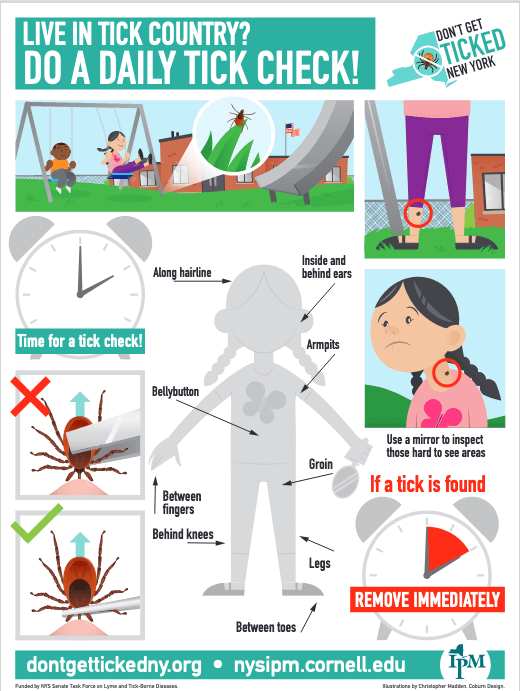Okay. So maybe ticks are for anyone available as a food source, but numbers from the CDC confirm that certain portions of the population (students and perhaps their grandparents) have higher percentages of confirmed Lyme disease than adults in the 20-55 range. While we won’t guess at the reasons, we think students make a great audience. They take notice and they just might share what they learn with their friends and extended families.
(Maybe it’s the ick factor – after all, ‘yucky’ topics and photos always get higher social media traffic!)

The Invitation
Our tick guru, Joellen Lampman, received an invitation to take part in this year’s Conservation Field Days for Ontario County, hosted by Ontario County Cooperative Extension. As an experienced and compelling speaker on the topic of ticks, she’s an obvious choice. But because this year’s Field Days would be a four day event held at Camp Bristol Hills, in Canandaigua, Joellen reached out to her NYSIPM co-workers for assistance.
Flexibility was needed! With varying numbers of stations and classrooms each day, the teaching sessions lasted between 15 and 20 minutes.


Why is reaching students so important?
They are at a high risk for tick-borne diseases, according to the CDC. From 2001 to 2019, students, especially young boys, were the ones most likely to be infected with Lyme, although the 2019 chart shows a big growth in Lyme cases in older adults.


Students learned that tick risk can be any time of the year depending on the species and their activity in certain habitats. You can reduce your risk by learning to dress to reduce chances that a climbing tick will find a suitable spot to feed, use tick repellents, check your skin and clothes for ticks of all life stages while you’re outside, tuck your pants into your socks (ticks climb), consider wearing clothing treated with permethrin, do a tick check every day, check your pets for ticks, throw your outdoor clothing in the dryer with 15-20 mins of heat, shower and do a detailed tick check, remember to look for ticks of all life stages–not just adults… (nymphs are very small and, because they’ve already fed, they are capable of transmitting tick-borne disease when they feed on you!) And don’t forget to learn proper tick removal! Not sure how to do all of this? Check out How Do I Protect Myself From Ticks? page at www.DontGetTickedNY.org.


Conservation Field Days
Hosted and organized by CCE’s Russ Welser, and Ontario County Soil and Water’s Alaina Robarge, four IPMers participated to bring TICK AWARENESS and TICK SAFETY to sixth graders from across Ontario County. CCE’s Nancy Anderson kept everyone organized during the week as CCE and 4-H Camp staff oversaw active learning stations run by folks from multiple agencies and resources:
- Ontario County Dairy Princess (Subject: Dairy)
- Ganondagan Historical Site (Subject: Native Americans and Conservation)
- 4-H Education (Subject: Geocaching)
- Bruce Gilman, FLCC Retiree (Subject: Poisonous Plants)
- Soil and Water Conservation District (Subject: Wild About Birds) and (Subject: Pond Life)
- Ontario County CCE Master Gardeners (Subject: Composting) and (Subject: Recycling)
- Finger Lakes PRISM (Subject: Invasive Species)
- NY State Integrated Pest Management Program (Subject: Ticks)
- Canandaigua Lake Watershed (Subject: Watershed Model )
- First Responders (Subject: First Aid)
- NYS DEC (Subject: Forestry)
Not able to get to an event?
Despite all of our efforts, we will never reach everyone in person. So we also provide valuable online resources on ticks and tick safety. FIRST AND FOREMOST, visit our Don’t Get Ticked New York website.
Post authored and edited by Debra Marvin and Joellen Lampman.